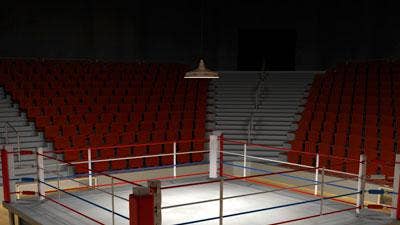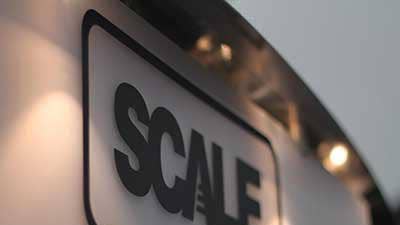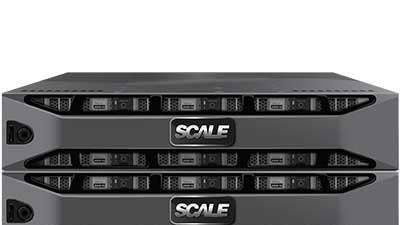CEO Jeff Ready On Scale Computing Vs. VMware’s vTax And Nutanix
‘The cost of vTax is big, but the real cost is in the ongoing administration of those systems. Over 50 percent of every IT budget is humans. That’s the real cost. To that extent, Nutanix doesn’t solve that problem,’ says Scale Computing CEO Jeff Ready.

Ready Is Ready
Scale Computing CEO Jeff Ready said his fast-growing hyper-converged infrastructure vendor is eating the lunch of competitors like VMware, Hewlett Packard Enterprise and Nutanix through automation and simplicity. Customers of VMware and Nutanix, Ready says, also have to deal with what he calls VMware’s “vTax” and Nutanix’s “NuTax.”
“When our partners are out there and selling these types of solutions, the elimination of VMware from the stack is key,” said Ready in an interview with CRN. “The cost of vTax is big, but the real cost is in the ongoing administration of those systems. Over 50 percent of every IT budget is humans. That’s the real cost. To that extent, Nutanix doesn’t solve that problem. I would say there’s a ‘NuTax’ and a ‘vTax.’”
Scale Computing, whose HC3 solution made CRN’s 10 Coolest Hyper-Converged Systems Of 2018 list, reported record sales in 2018 with hundreds of new customers and channel partners. “We effectively more than doubled the size of our channel partner base last year. We expect to double it again this year,” said Ready. The CEO talks to CRN about growth expectations in 2019, hyper-converged product pipelines and replacing the competition.

What are your thoughts on VMware and Nutanix trading barbs over hyper-converged strategies?
There’s been a little spat between Nutanix and VMware. We don’t use VMware. When people draw a circle around hyper-convergence, it’s us, Nutanix, Pivot3 and some others, but I have always said VMware is our number one competitor. I sent a note to [Nutanix CEO] Dheeraj Pandey giving them a hard time because they have this big marketing push around the ‘no vTax’ -- no VMware tax. But the thing is that we put out that logo in 2013. Maybe copying is the best form of flattery, but that was years ago. We had this whole campaign about it. There’s a video that our co-founder, Jason Collier, did at a midsize enterprise summit where he went on stage and sang a song set to John Lennon’s ‘Imagine’ but he changed the lyrics to, ‘Imagine there’s no vTax.’ That was six years ago. But vTax was a term thrown around even before that. I find it odd because a large percentage of Nutanix’s business is still dependent on them selling VMware.

So what’s your strategy to take share from Nutanix and VMware?
When our partners are out there and selling these types of solutions, the elimination of VMware from the stack is key. The cost of vTax is big, but the real cost is in the ongoing administration of those systems. Over 50 percent of every IT budget is humans. That’s the real cost. To that extent, Nutanix doesn’t solve that problem. I would say there’s a [Nutanix-tax] NuTax and a vTax. Those terms mean that no matter what, when you deploy those systems they require a fair bit of administration work. There’s a Nutanix [instructions] bible which is hundreds of pages long compared to Scale’s which is more like a smart phone in that you plug it in and you’re not even given instructions because we assume it will be obvious how you use it. When you’re selling into a big data center that’s a different story, but when you’re selling into edge locations and into the SMB through an MSP, simplicity and automation is what makes the whole thing work.

Can you give a real example of a businesses swapping out a competitor in favor of Scale Computing?
A recent example is our win with Genting Casinos who now deploys Scale across its more than 40 U.K. sites. They have a big centralized data center and they were using HPE at that data center with some hyper-converged solution – I assumed it to be SimpliVity – running in the data center. HPE SimpliVity is a VMware-based product. The challenge the casinos had was their IT resources, the humans, were all at the data center. The humans weren’t at the casinos, which is not like the MGM in Vegas, but smaller casinos that are true edge-type locations. They had HPE and VMware running inside the casino and every time something would break, you had to dispatch somebody or shut it down. They needed that high availability. They needed the ability for the casinos to self-manage. They didn’t care if it was VMware or otherwise. We went in and bid that deal through some partners. I would argue that it won the day easily. They’re wish list of a self-managing system that they could quickly deploy, be stood up in a few minutes, have it monitoring centrally and knowing that as stuff breaks it would take care of itself -- there was no one else who could do that. We were able to go in and win that deal.

Is there another recent example of Scale winning over the competition?
Of course. The same story with [international food retailer] Ahold Delhaize. HPE is really strong in Europe. They had HPE servers in all of their stores running VMware and it was just a mess. They had security and high availability problems. They told me they had stores with IT problems daily. They tested our stuff and started rolling it out. They now have standardized on Scale to be the infrastructure inside those stores. I’m certain they’re still running VMware for backend data center stuff, but in the stores – those administrators aren’t there – so the Scale platform consolidated everything and reduced a ton of cost. The CIO told me that they deployed us in 200 stores and not one of them reported a single IT problem which was quite the change from the daily problems. In both cases we displaced HPE. Good for our partners who were able to do that.

You closed out a record-breaking sales year in 2018 along with $35 million in funding and new partnerships. Can you grow that much again this year?
We think we are on track to grow over 100 percent this year in both sales as well as the size of the channel. They’re somewhat tied together. We do sell everything through the channel. They go hand in hand. You look at the big industry numbers on the growth for hyper-converged and edge computing market, you’ll get different numbers from different sources, but it’s all in the range 20 percent to 50 percent growth a year. We’re going to grow 100 percent. So I know we’re outpacing the market. That’s really exciting for both us and partners. They know that by working with Scale they’re getting an excellent product and getting a vendor partner whose committed to seeing them succeed as well. … We’ve been at this for a decade. Our partners and customers like us and the products which is why we’re seeing such explosive growth moving forward.

How much is your channel partner base growing?
We effectively more than doubled the size of channel partner base last year. We expect to double it again this year. That’s not to say partners aren’t in prime position to have something interesting and unique with Scale. We’re just about at 600 channel partners today and we’ll double that over the course of the year, but compare that to the around 24,000 VMware partners. I can’t throw a rock out of this building without hitting four VMware partners. So there’s a real opportunity for our partners to deliver something unique to their customers and then our strategy to align with partners.

Talk about the edge opportunity for Scale?
We’re seeing a ton of activity and deal flow around edge computing, which is a fancy way of saying critical IT infrastructure that exists outside the data center. It’s driven by lots of different things. There’s IoT, increasing use of things like video cameras and processing of data, AI analytics, and things that happen in real time where that data is collected. We did another casino deal with one of our partners and they put in 3,000 4K cameras. You can imagine that you’re not streaming 3,000 4K video streams into the cloud and then waiting for a response. That would be absurd. We’re seeing this all over the place including retail as well. Consumer expectations are that retailers are going to have real technology, better engagement and change the shopping experience. That’s how brick and mortar retailers have to compete with an Amazon, for example.

Where’s the edge opportunity for channel partners?
For example, you go into a retailer and there’s a mobile app that’s guiding you through the store, digital signage that’s customize to you and maybe the elimination of traditional checkout. For all of that you are piling up mission critical applications locally, but notability there’s not a single IT person in that store. That’s the challenge and opportunity for partners where we’re seeing a lot of opportunity across the board. The sweet spot for Scale has always been providing technology that helps through simplicity, automation, high availability and environments with very few human IT resources. Whether it’s a large retailer that need local resellers because they need services and somebody to be around, or the more traditional reseller serving small and midsize companies, the edge is a great fit for our partners.

What’s coming down the innovation pipeline for Scale?
We’ve started doing some things already, but we’ll have more throughout the year around what I would call non-traditional form factors for the gear. So the Scale platform will run on traditional servers that you put in a rack, but when you get into some of these environments you see that traditional servers kind of don’t make any sense. The reason that servers are measured by 1U, 2U, 4U and have rack mount screws and all of that is because it goes into the data center. By definition, when you’re out at the edge you’re probably not in a data center. You think about a fast-food restaurant, for example, are they really going to stand up a rack of gear? No. … Some of these new technologies, whether it’s an Intel NUC or a Lenovo tiny server as a form factor make more sense. They consume less power, generate less heat and are far less expensive. As long as you have a software layer which can turn those things into a true highly available clustered environment, which is what we do, then that’s all you need.